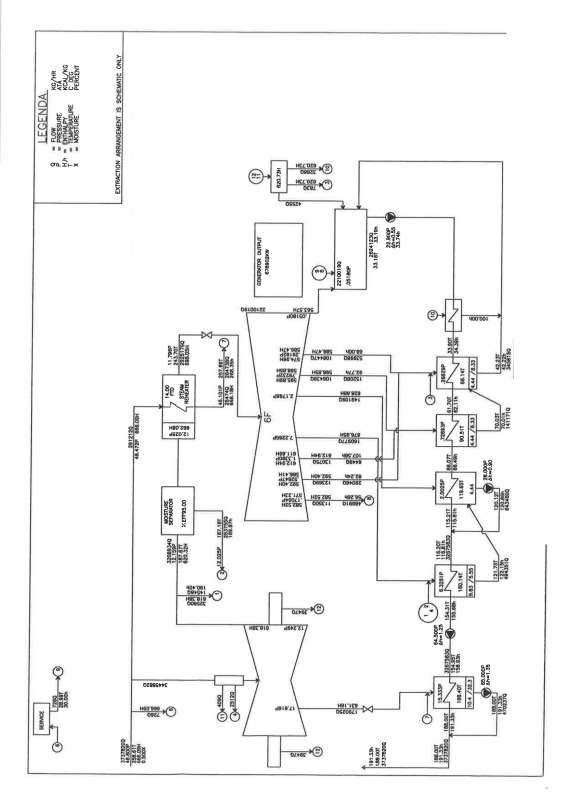Superossido93
Industrial
Hi!
I have a Nucleare power plant operating with a regenerative cycle, that has also spillages in the High Pressure turbine and in the Low pressure turbine(they are 3 LP working in parallel).
Hp and the 3 LP are biflux.
Regarding the 3 LP, I have 6 spillage each, and the problem is that the first one is done between the 1st and 2nd diaphragm on the left side, the second is between the 2nd and 3rd diaphragm on the right side, and the last four are thank god simmetric (2 on the right side and 2 on the left side).
Now, i know the pressure at the inlet of the 3 LP and the overall Steam flow that goes to the 3 LP(i don't know how much flow goes in each LP turbine), I know the Area of the exit of each spillage, and i know at which pressure the flow exit through each spillage. The remaining steam exits the LP going into a condenser (at 0.05 bar), and i know the overrall remaining steam flow and is pressure.
Now the happy part! The 3 LP turbines do not have the same Area of spillage due to calibration, and some are very much bigger.
How can i calculate the steam flow though the spillage?
I have a Nucleare power plant operating with a regenerative cycle, that has also spillages in the High Pressure turbine and in the Low pressure turbine(they are 3 LP working in parallel).
Hp and the 3 LP are biflux.
Regarding the 3 LP, I have 6 spillage each, and the problem is that the first one is done between the 1st and 2nd diaphragm on the left side, the second is between the 2nd and 3rd diaphragm on the right side, and the last four are thank god simmetric (2 on the right side and 2 on the left side).
Now, i know the pressure at the inlet of the 3 LP and the overall Steam flow that goes to the 3 LP(i don't know how much flow goes in each LP turbine), I know the Area of the exit of each spillage, and i know at which pressure the flow exit through each spillage. The remaining steam exits the LP going into a condenser (at 0.05 bar), and i know the overrall remaining steam flow and is pressure.
Now the happy part! The 3 LP turbines do not have the same Area of spillage due to calibration, and some are very much bigger.
How can i calculate the steam flow though the spillage?

